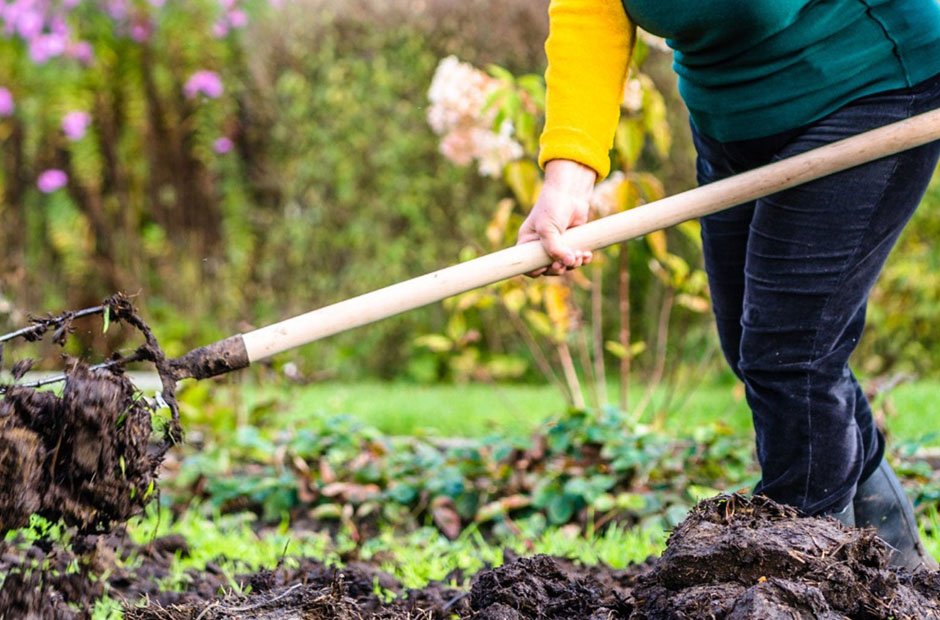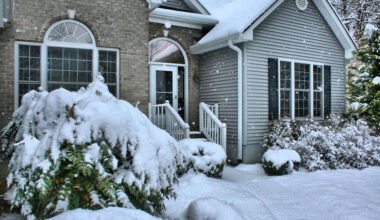Most gardeners approach fall as cleanup season—a time to tidy up before winter and call it done until spring arrives. But autumn is actually when some of the most valuable garden work happens, the kind that doesn’t show immediate results but creates conditions for healthier plants and easier maintenance when the weather warms up again. The problem is that most fall effort goes toward cosmetic tasks that look productive but don’t accomplish much beyond temporary neatness, while the work that actually matters gets skipped entirely.
The difference between strategic fall prep and busywork comes down to understanding what helps plants and soil versus what just makes humans feel accomplished. Raking every single leaf into bags and hauling them to the curb might look industrious, but it removes organic matter that could feed the garden. Leaving beds completely bare might seem tidy, but it exposes soil to erosion and temperature swings. Meanwhile, the autumn tasks that build better growing conditions for next year often look messy or incomplete to neighbors who equate maintenance with removing everything natural from the yard.
Managing Leaves Without Removing All the Benefits
Fall leaves create a dilemma in most yards. Too many leaves left in place will smother grass and create matted layers that block air and water. But removing every leaf also removes nutrients, organic matter, and natural soil protection that gardens need. The goal isn’t total removal—it’s managing the volume so yards get the benefits without the problems.
Thick accumulations on lawns need to be addressed because they prevent light from reaching grass and trap moisture that encourages fungal issues. But instead of raking everything to the curb, those leaves can be reduced and redistributed where they help rather than harm. Shredding leaves significantly decreases their volume while speeding up decomposition, turning potential problems into soil-building material. Tools designed for this purpose—a leaf mulcher breaks leaves down into smaller pieces that decompose faster and take up far less space than whole leaves. The mulched material can go back onto lawns in thin layers that won’t smother grass, or into garden beds as winter protection and slow-release nutrients.
Garden beds benefit from a moderate leaf layer over winter. That coverage insulates plant roots from temperature swings, protects soil from erosion, suppresses early spring weeds, and breaks down into organic matter that improves soil structure. The key word is moderate—a few inches of shredded leaves works well, while a foot of whole leaves creates problems. Beds with perennials, bulbs, and established plants can handle more coverage than areas with shallow-rooted annuals or newly planted sections.
Soil Protection That Actually Matters
Bare soil exposed to winter weather loses structure, nutrients leach out with rain and snowmelt, and beneficial soil organisms struggle without the insulation and food source that organic matter provides. Yet many gardeners end up with bare beds in fall because they’ve cleaned away all plant debris and organic material in the name of tidiness.
Protected soil comes through winter in better condition. A covering layer—whether leaves, compost, or other organic mulch—keeps soil structure intact, prevents erosion, maintains more stable temperatures for root systems, and feeds the microbial activity that creates healthy growing conditions. This protection doesn’t need to be fancy or expensive. Shredded leaves work as well as purchased mulch for winter coverage, and they’re free.
The timing matters too. Adding this protective layer after the first hard frost but before ground freezes solid gives soil the most benefit. Too early, and it can keep soil warmer than it should be, potentially confusing plants about dormancy timing. Too late, and frozen ground makes application difficult and reduces the protective benefit. Most regions hit this sweet spot in mid to late fall, after a few frosts have put plants into dormancy but before sustained freezing sets in.
Perennial Care That Sets Up Spring Success
Perennials don’t need elaborate fall preparation, but a few strategic steps make a noticeable difference in how they emerge and perform next season. The common instinct is to cut everything down to ground level for neatness, but that approach often creates more problems than it solves.
Many perennials benefit from keeping their top growth through winter. Those stems and seed heads provide winter interest in the garden, offer food and shelter for beneficial insects and birds, and protect the plant’s crown from extreme cold. The dead foliage also marks where plants are located, preventing accidental digging or stepping on dormant crowns in early spring before new growth emerges.
The perennials that do need cutting back are typically ones with disease issues or those that turn to mush and create slimy messes. Hostas, for example, develop leaf spot problems that overwinter in dead foliage, so removing that material in fall prevents reinfection next season. Peonies can harbor fungal spores in dead stems and leaves. But plants like echinacea, rudbeckia, sedum, and ornamental grasses can stay standing with no downside and several benefits.
Dividing overcrowded perennials in fall gives them time to establish roots before winter dormancy. Spring division works too, but fall-divided plants often settle in better because soil stays warm enough for root growth while top growth has stopped, focusing the plant’s energy underground. This applies mainly to spring and summer bloomers—plants that flower in fall should be divided in spring instead.
The Bulb Planting Window That Everyone Knows About But Still Misses
Spring bulbs need to go into the ground in fall, and everyone knows this. Yet bulb planting often gets pushed back and back until it’s too late or the ground has frozen solid. The problem is that fall feels busy with other garden tasks, and planting bulbs doesn’t show immediate results, making it easy to prioritize things with visible payoff.
But here’s what happens when bulb planting gets delayed or skipped: next spring arrives with no early color, no cheerful daffodils or tulips, and the realization that waiting until spring to plant wonbs’t work because they need that cold period to bloom. The fall planting window is finite—bulbs need enough time to develop roots before ground freezes, but they also need exposure to cold temperatures to trigger proper spring growth.
The ideal timing falls after soil temperatures drop below 60 degrees but before ground freezes. In most regions, that means October through early November. Earlier than that, and bulbs might start sprouting prematurely. Later, and they don’t develop adequate root systems before dormancy. Bulbs planted right at the deadline can still perform, but they’ll likely bloom later and potentially less vigorously than those planted with time to spare.
Lawn Preparation That Goes Beyond Just Mowing One Last Time
Fall lawn care creates conditions that determine how grass looks and performs for most of next year. Cool-season grasses grow actively in autumn, making this the best time for improvements that won’t show results until spring and summer.
Aeration in fall addresses soil compaction that builds up over the growing season. Compacted soil prevents water, air, and nutrients from reaching grass roots effectively, leading to thin, weak turf that struggles with drought and disease. Aeration pulls small plugs of soil out of the ground, creating channels that relieve compaction and let roots grow deeper. The process looks messy for a few weeks while those soil plugs break down, but the improvement in grass health is significant.
Overseeding fills in thin spots and thickens overall turf density, making lawns more resistant to weeds and better able to handle foot traffic and weather stress. Fall temperatures and moisture create ideal germination conditions, and new grass has months to establish before facing summer heat. Overseeding right after aeration works especially well because seeds fall into the aeration holes where they have good soil contact and protection.
The final fall mowing height matters more than most people realize. Cutting grass too short leaves it vulnerable to winter damage and early spring weeds. Letting it grow too long encourages matting under snow and creates entry points for disease. The sweet spot for most cool-season grasses is around two to two and a half inches for that last cut—short enough to prevent matting, tall enough to protect crowns and maintain some photosynthesis during mild winter periods.
What This Actually Means for Fall Garden Work
The fall tasks that pay off in spring aren’t necessarily the ones that look most impressive to neighbors or create immediate visual satisfaction. They’re the work that builds better growing conditions, protects plants and soil through winter, and reduces problems that would otherwise emerge when the weather warms.
This means autumn garden work should focus less on achieving perfect tidiness and more on preparing the growing environment. Some leaves stay in the yard rather than being bagged up. Perennials keep their dead tops instead of being cut to ground level. Soil gets covered rather than left bare. The yard might look slightly less manicured in November, but plants and soil will be healthier in April, and that’s what actually matters for anyone who cares about gardens beyond just appearances.
The other benefit? Much of this fall prep actually creates less work than the traditional clean-everything-to-bare-ground approach. Leaving perennials standing means no cutting and hauling. Using leaves as mulch means no buying and spreading commercial products. Protecting soil means better structure that’s easier to work with come spring. The tasks that help the garden also happen to be the ones that require less labor and expense, which is a combination that should make fall preparation more appealing rather than less.



